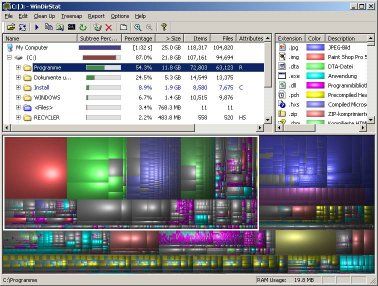I guess it had to happen eventually. The US Coast Guard apparently intends to turn off Loran-C next month.
Just as Loran took over from Omega, GPS is now making Loran-C obsolete. Still, we dinosaurs will miss it. Loran has long been associated with marine and aircraft navigation, of course, but it also has a special place in my heart as the first navigation technology that I used.
Back in the day (mid ’90s?), I found a surplus Loran-C receiver at a hamfest. I didn’t really know how they worked at the time, but it was cheap ($10 or $20, I think), and it came with a book that explained what voltage and polarity it needed on the power connector, so I bought it.
After a little reading, some soldering, and some programming in TRS-80 Model 100 BASIC (an awesome little laptop — more about it later), I actually had a functional navigation system! That is, I could tell my latitude and longitude, and calculate line-of-sight distance to various waypoints that I set. Not the most practical thing in the world to mount in a car, but it was a lot of fun.
It actually did help with navigation, too. A few days after installing it, I was driving home from a friend’s house in Norfolk, and turned the wrong way onto Tidewater Drive. I’d have found this out soon enough myself, but I happened to glance down at the Loran, saw that my heading was 360ish when it should have been 180ish, and did a U-turn. That was pretty cool — I never expected it to actually do something practical.
I got a lot of programming experience out of it, too. The Loran would output its latitude and longitude (in degrees, minutes, and seconds) once a second. Even compressed into bytes, this was three bytes for latitude and three for longitude, every second. Today, this is a ridiculously low data rate — but on a Model 100 laptop with a whole 22k of free memory (including the logger program code), six bytes a second was WAY too much for logging a long trip — it wouldn’t even last an hour.
So I got creative. I realized that the latitude and longitude *degrees* hardly ever changed — and that the minutes didn’t change much, either. I came up with a scheme to compress the data: two bytes were normally recorded each second for the latitude and longitude, except when one or the other rolled over to the next minute and/or degree. In those cases, an “!” was inserted in the data, telling the plotting program that a full six-byte frame would follow.
With that scheme, I was able to record over eight hours’ worth of data in the M100’s 22k of memory — including the recording/compression program! My friend Jason and I took the whole setup (ported to a larger Compaq Plus computer) along on a road trip to Milwaukee and back. It worked pretty well — even when we had to shift it over onto the Great Lakes Loran chain.
I don’t know how good its accuracy (repeatability) was, but its precision was sometimes pretty good. On the way back from one roadtrip, I decided to drive all the way around a cloverleaf interchange (four 270-degree turns) as a test. When I got back home and looked at the data using a quick-and-dirty plotting program I wrote, the whole cloverleaf was clearly visible, albeit squashed a bit in places due to only having one update every six seconds. Not bad for several-decades-old technology.
I know it had to go — but I’m still going to miss it.


